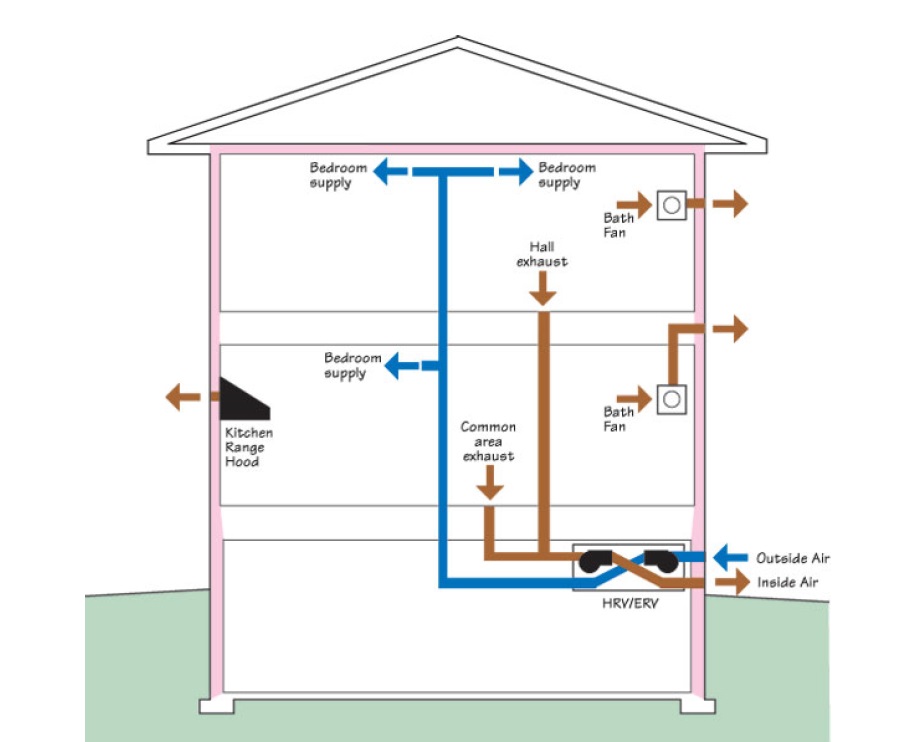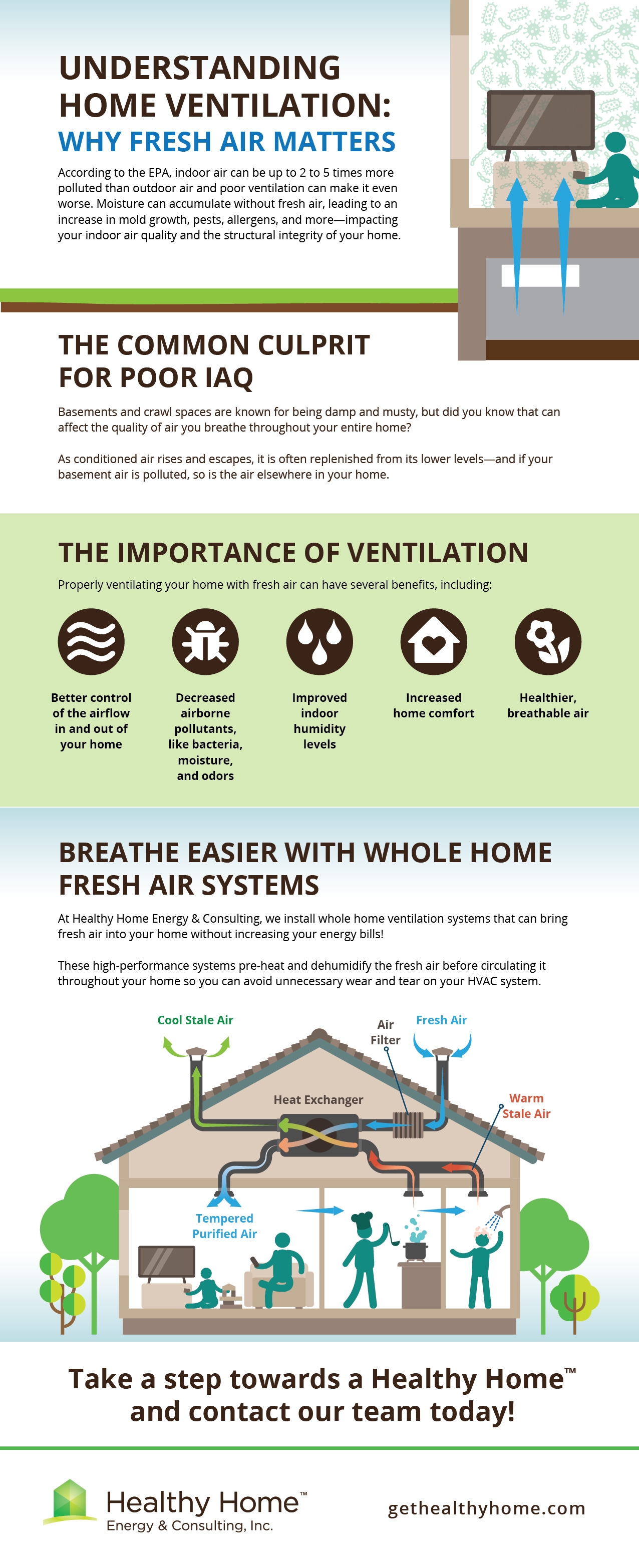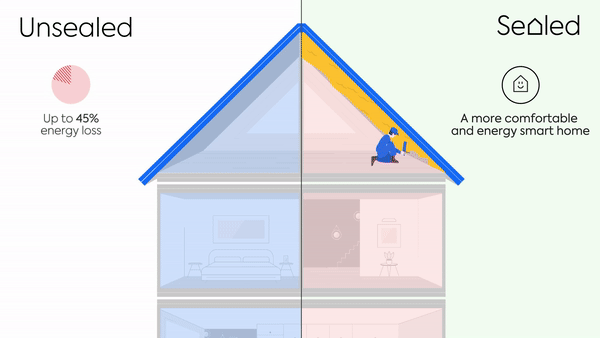Common Indoor Pollutants and How Home Ventilation Melbourne Reduces Them
Recognizing the Value of Home Air Flow for a Healthier Living Environment
Home ventilation plays a necessary duty in maintaining a healthy living atmosphere. It promotes the exchange of exterior and interior air, which is vital for enhancing air top quality. Without correct ventilation, homes can come to be reproducing grounds for allergens and pollutants. The repercussions of inadequate air flow can be substantial. This raises the inquiry of just how home owners can efficiently execute ventilation techniques to safeguard their wellness and well-being. Comprehending these approaches is imperative.

The Fundamentals of Home Ventilation
Home air flow serves as a crucial part of interior air top quality and convenience. It includes the process of trading stagnant indoor air with fresh exterior air, therefore decreasing humidity and regulating temperature level. Correct air flow systems can consist of natural methods, such as open home windows and vents, along with mechanical systems, such as exhaust fans and air exchangers. Effective home air flow helps stop issues like indoor mold growth and the buildup of hazardous bits. It likewise improves general energy efficiency, as well-ventilated rooms can keep comfy temperatures with less dependence on home heating and cooling systems. Comprehending the basics of home air flow is crucial for property owners seeking to create a much healthier living atmosphere for themselves and their family members.

Common Resources of Indoor Air Contamination

Lots of may not recognize it, indoor air pollution can originate from various sources within a household. Common contributors consist of unstable natural compounds (VOCs) emitted from paints, solvents, and cleansing items. Home appliances, such as gas cooktops and fire places, can release hazardous gases like carbon monoxide and nitrogen dioxide. In addition, mold and mildew and mildew flourish in damp areas, launching spores that influence air quality. Animal dander, dirt mites, and plant pollen can build up inside, more worsening pollution levels. Cigarette smoking inside your home creates poisonous chemicals that remain airborne. Constructing products, including asbestos and formaldehyde, can off-gas damaging substances. Identifying these resources is essential for keeping a healthier indoor atmosphere and promoting effective air flow techniques.
Health Consequences of Poor Air Flow
Interior air pollution can have significant health implications, especially when ventilation is insufficient. Poor air flow can bring about the build-up of dangerous pollutants, such as volatile organic compounds, mold and mildew, and particle matter. This buildup might lead to respiratory concerns, consisting of bronchial asthma, allergies, and persistent obstructive pulmonary disease. People might experience symptoms like migraines, exhaustion, and irritation of the eyes, nose, and throat. Vulnerable populations, such as youngsters and the elderly, are at higher danger for extreme health effects. Long-lasting exposure to badly aerated atmospheres can likewise add to a lot more significant conditions, including heart diseases. Ensuring correct air flow is necessary for keeping a healthy and balanced living environment and lowering the threat of health and wellness problems connected with indoor air pollution.
Reliable Air Flow Techniques for Your Home
Correct air flow is vital for preserving a healthy interior environment, and carrying out efficient methods can significantly improve air high quality. Property owners can begin by making certain that exhaust fans are mounted in bathroom and kitchens to eliminate excess dampness and odors. Opening up home windows consistently allows fresh air to flow, especially during moderate climate. Furthermore, making use of air purifiers with HEPA filters can assist capture airborne toxins. For homes with heating and cooling systems, keeping a/c these details systems and changing filters consistently is important for peak efficiency. Incorporating all-natural ventilation methods, such as cross-ventilation, can likewise boost airflow. Finally, sealing any type of leakages in windows and doors prevents unwanted drafts, which can interrupt regulated air movement, ultimately causing enhanced interior air top quality and convenience.
Preserving Optimal Air High Quality Year-Round
To maintain ideal air top quality year-round, home owners must adopt a proactive method to handling their indoor atmosphere. Consistently keeping an eye on interior air top quality is crucial; this consists of checking for pollutants such as dust, mold, and unstable organic compounds (VOCs) Executing efficient air Visit Your URL flow systems, such as exhaust followers and air cleansers, can greatly lower airborne pollutants. Furthermore, regular upkeep of a/c systems guarantees peak efficiency and air flow. Property owners ought to also consider moisture degrees, as extreme wetness can result in mold development. Seasonal modifications may necessitate changes in ventilation strategies to suit differing exterior air high quality. By focusing on these methods, property owners can produce a healthier living room, advertising overall well-being for all residents throughout the year.
Regularly Asked Concerns
How Can I Tell if My Home Requirements Better Air Flow?
To determine if a home calls for better ventilation, one need to observe indications such as relentless humidity, mold and mildew growth, moldy smells, condensation on windows, or raised allergy signs and symptoms, indicating insufficient air flow and possibly bad indoor air top quality.
What Are the Indications of Poor Indoor Air Top Quality?

Can Houseplants Improve Indoor Air High Quality Successfully?
The performance of houseplants in boosting interior air quality is debated. While some researches suggest they can absorb toxic substances and generate oxygen, their general influence may be marginal compared to appropriate ventilation and air purification systems.
How Commonly Should I Modification My Air Filters?
The regularity of air filter modifications normally depends upon usage and filter kind. Typically, it is advised to change filters every three months, though houses with family pets or allergies may require even more frequent changes for perfect efficiency.
Exist Any Type Of Details Ventilation Equipments for Allergic Reaction Sufferers?
Many air flow systems, such as HEPA-filtered units, efficiently lower allergens airborne. Home Ventilation Melbourne. These systems trap pet dog, dust, and pollen dander, offering allergic reaction victims with a cleaner, much healthier indoor environment while taking care of air quality effectively
It helps with the exchange of exterior and interior air, which is find essential for improving air top quality. Home air flow offers as an important element of indoor air quality and convenience. It entails the process of exchanging stale indoor air with fresh outside air, therefore decreasing moisture and regulating temperature level. Interior air pollution can have significant health implications, especially when air flow is insufficient. Proper air flow is necessary for keeping a healthy and balanced interior setting, and implementing effective approaches can considerably boost air high quality.